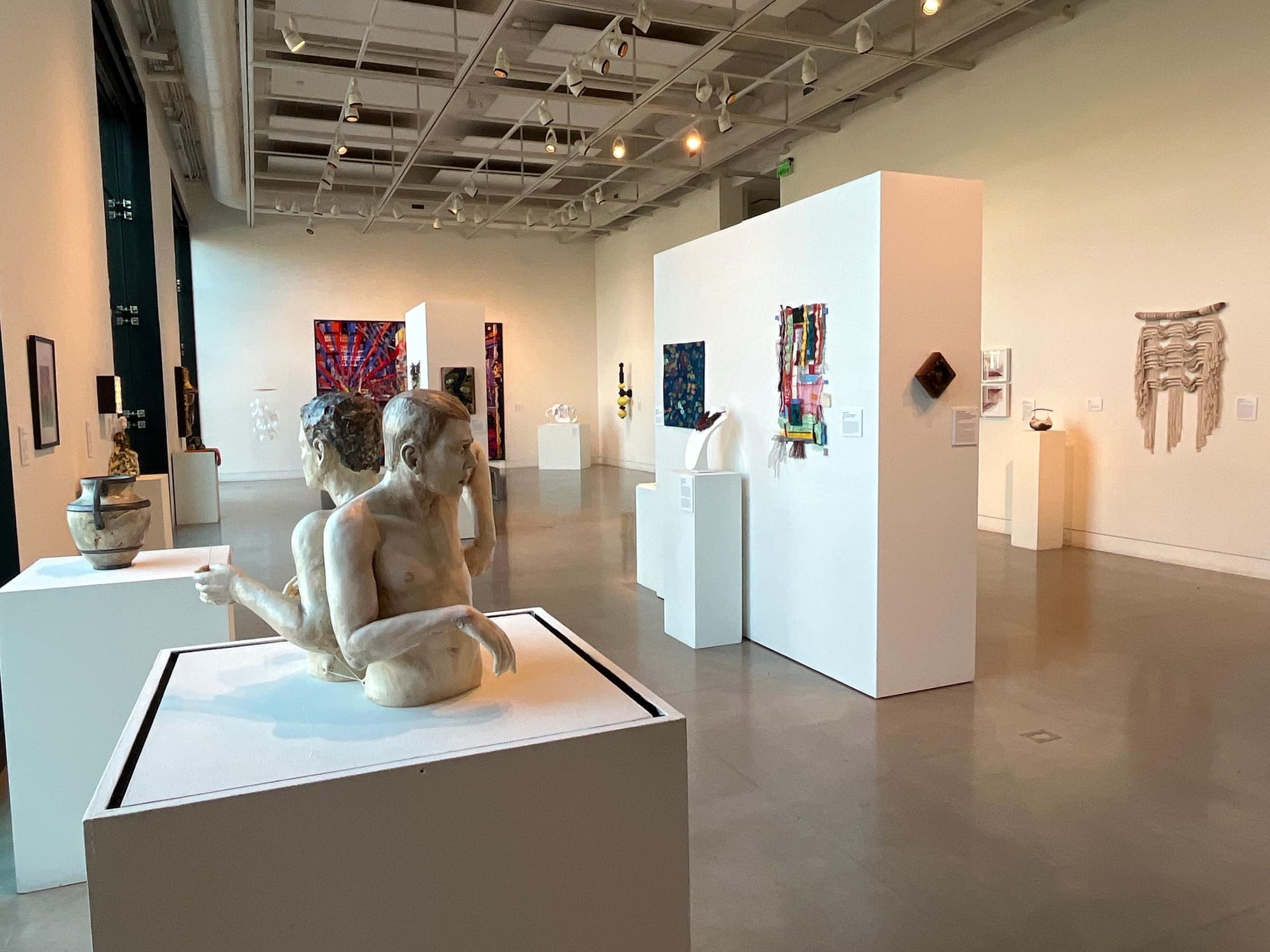The State of Craft
108|Contemporary
Tulsa
Through Jan. 21
Threads, grain, skeins, ripples: these are the textures that connect us, and no art modality lets us see them better than the one known as “fine craft.” There’s nature, and there’s us; between the two is the human hand, pulling the world’s constitutive elements into a dance with conscious feeling, one stitch or hammer strike or firing at a time.
I swoon a little pretty much every time I go into 108|Contemporary, whose wide windows and high ceilings house work that’s the result of an almost monastic kind of labor with materials like metal, paper, glass, and fabric. Walking through the gallery’s current show — The State of Craft, which features 33 pieces by its member artists, all from Oklahoma, juried by Mary Anne Jordan — is like taking a master class in the genre.
The expert curation of The State of Craft allows every subtle link between effort and environment — all those ripples and threads — to surface and speak. I feel like we don’t talk enough about the art of laying out a show, choosing what goes next to what, the thought that goes into designing the “container” of an exhibit so that its contents come into conversation with each other (and so that the viewer can hear that conversation clearly). In this case, how the show is arranged is as much a work of art as any of the pieces that are part of it.
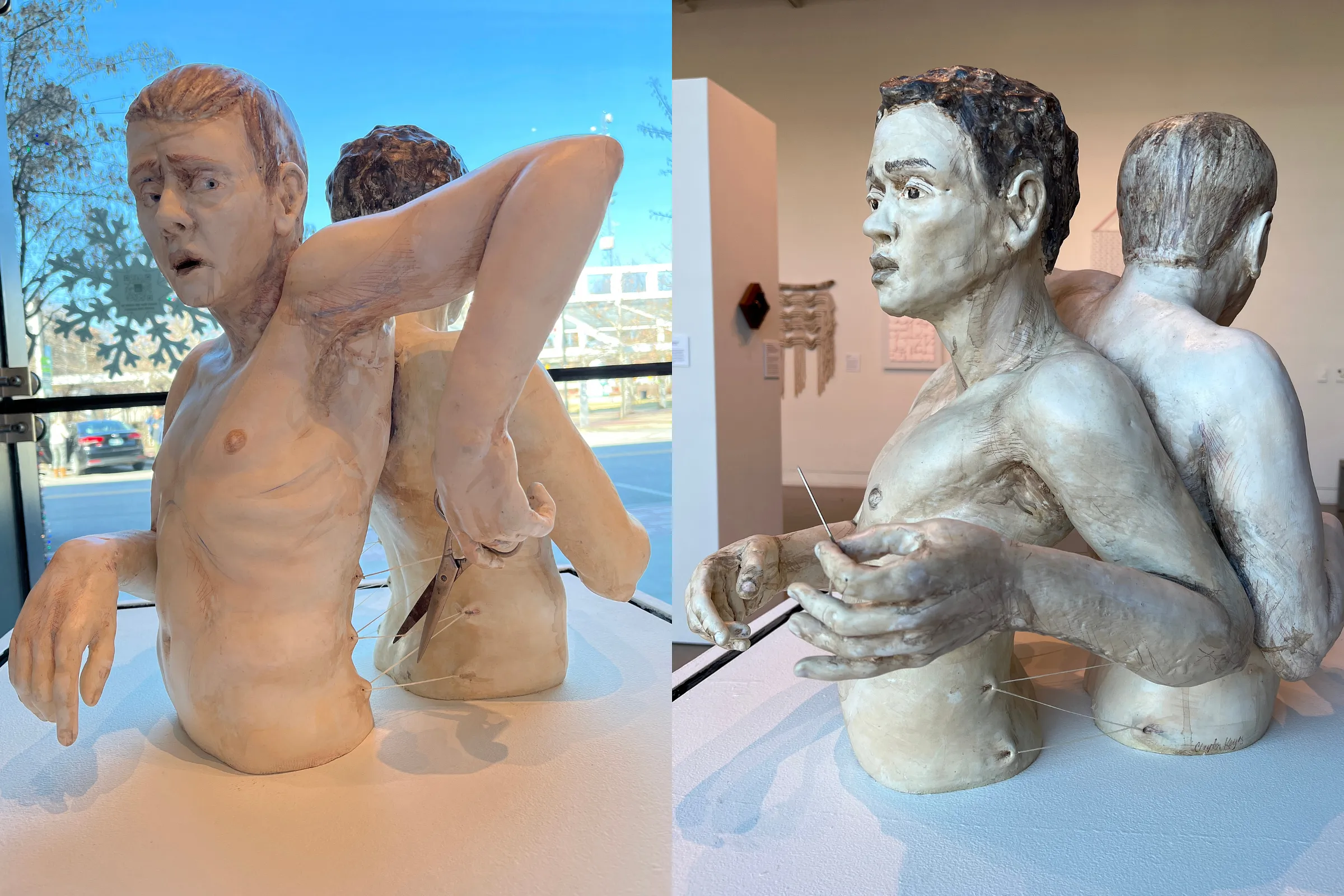
As I walked through 108’s doors and turned to face the gallery space, I sensed a quiet presence at my left elbow. It was, in fact, another elbow — that of one of the ceramic figures in Clayton Keyes’ extraordinary Conflict Resolution, raised and inverted in an uncomfortable gesture of tension that felt as vulnerable as a held breath.
My eyes traveled down the gentle swell of the figure’s bicep, down ribs scraped and streaked with glaze and paint marks, to the hand at the end of the arm, holding a pair of scissors, forever readying to snip the threads that bind this figure to the other at its back, who holds the needle that pulls the string, looking out the window with an inexpressible expression. Arrested in this action (neither conflict nor resolution but somehow both), the figures are enmeshed and independent, bound and separate, present to each other and remote, one and not-one.
Lines of tension, lines of connection, lines of no and of yes. The tautness of the string, the mobile softness of the bodies, the gestures that hold the unsolvable questions of life. Those were the images in my head as I turned from the private immediacy of the show’s initial piece to see something vibrant and monumental at the other end of the gallery: Mark Lewis’s collage Night Painter, the exhibit’s “juror’s choice” award winner, whose strong lines illuminate a detailed mass of colors and textures, outstretched like the branches of a tree, or a blast of spotlights, or the bones of a reaching hand.
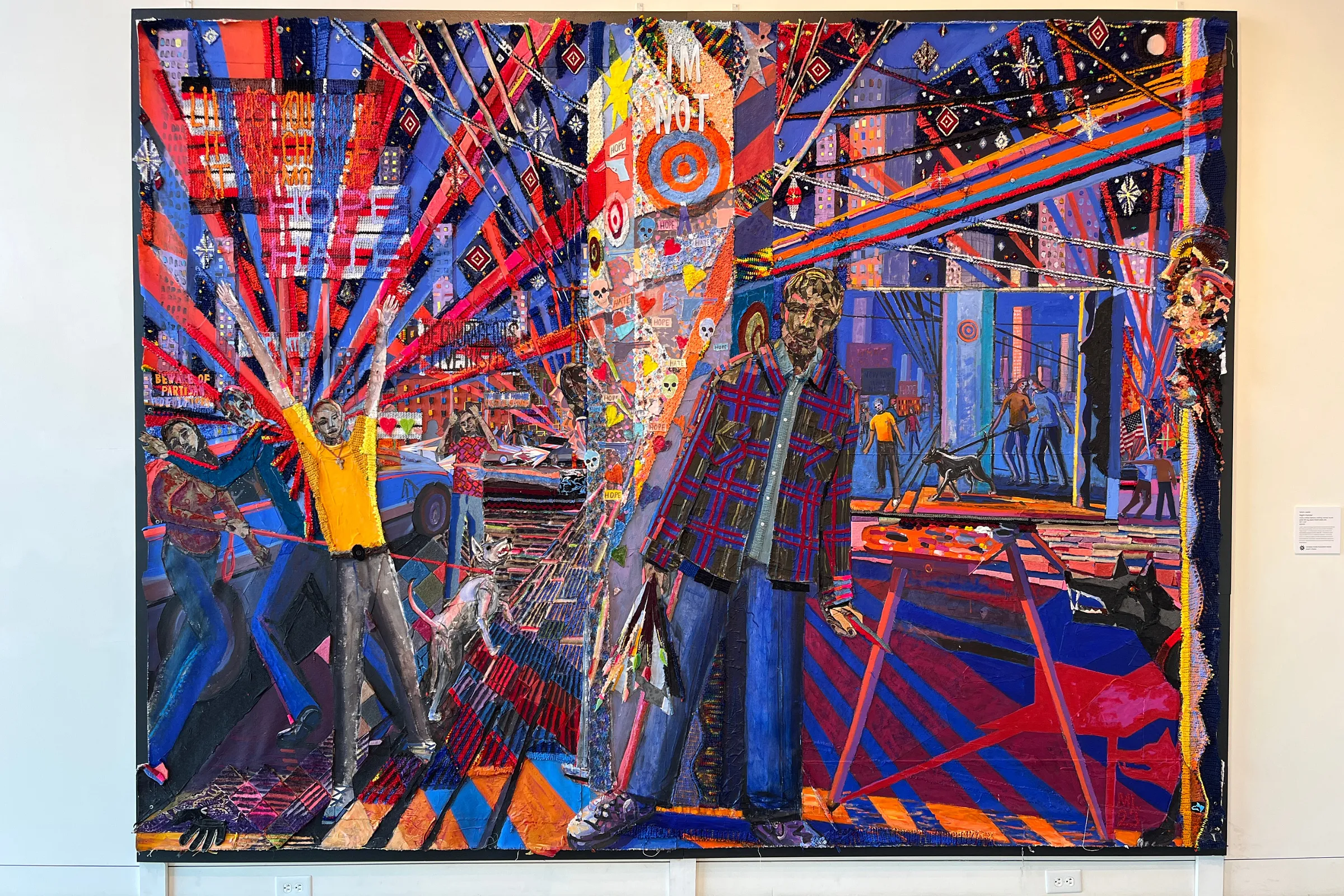
These two anchors, one intimate and one massive, set up a resonance that vibrates through every other piece in the show. I saw the curve of that elbow again in Joe Kissinger’s carved amphora, and in the delicate edges of a paper bowl by Terri Higgs, streaked with threads and punctuated by red circles like drops of blood. Stitches — which speak to the work of mending, of binding, of marking (and sometimes healing) the place of a rift — appear all across the space, from the tiny embroidery x‑marks in Marilyn Artus’s mixed media Battleground, to Susan Michael’s quilted Abstract Set Six, to Taylor Painter-Wolfe’s Salt Fork, Arkansas, which hangs beside a stunning piece of bumblebee jasper crafted into an adornment by Penni Gage, the stone’s rivulets of color singing brightly next to Painter-Wolfe’s snake-like river scene.
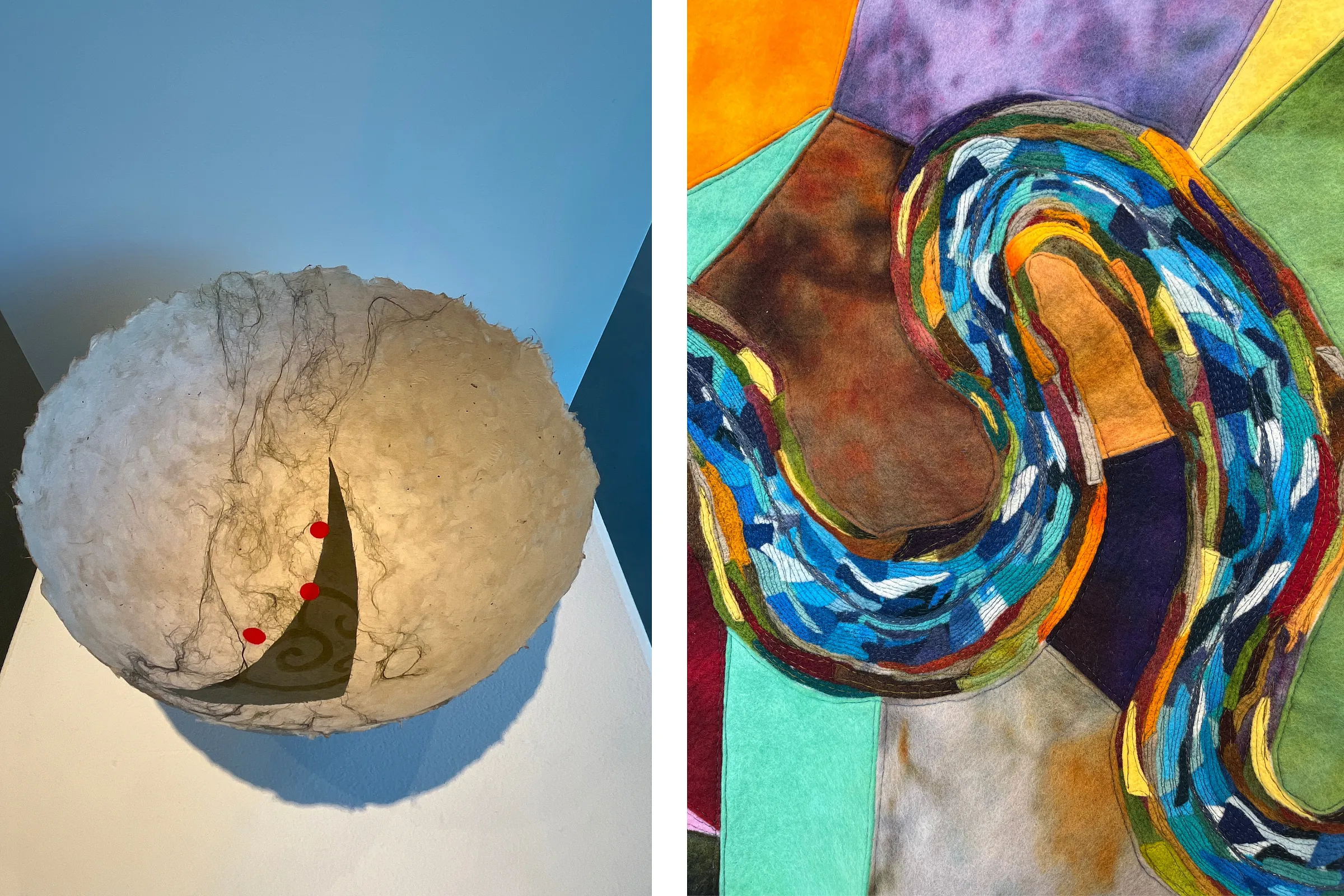
On one wall, the bold pink tones of Battleground melt into the gentle rose of Cathryn Thomas’s sculpture I Come Into Peace, and further still into faint peachy fluorescences around the geometric shapes in Steven Schmidt’s Halo 27: Triton. Adjacent works by Lizzie DiSilvestro, Byron Shen, and Sarah Robl explore how lines become curves, while across the room Cassidy Frye’s Comes In Waves dives deep into the humble Jell‑O mold as a site of suspension, encasement, nostalgia, and translucency, sculpting a pile of them in stoneware and setting them on top of a ‘70s-colored handmade rug.
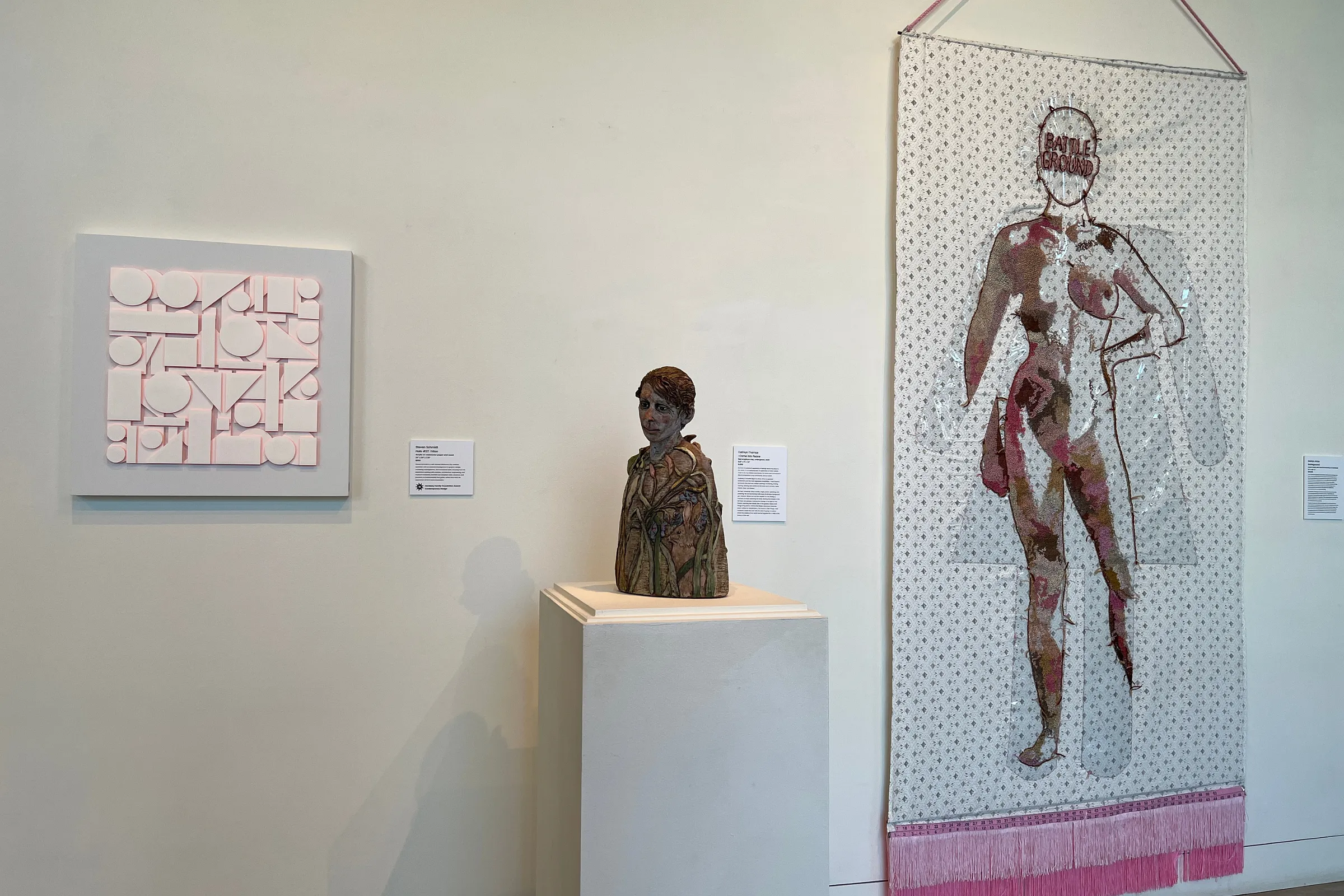
If you’re any sort of texture-sensitive person, this show will have you in ecstasy. A few cases in point: A satisfying crackle glaze like a lemon crinkle cookie, bulging between blacks that range from glossy to felty (Gayle Singer, Mellow Yellow). Hundreds of smooth clay cones arranged into a necklace like the teeth of some impossible creature (Nancy Andrasko, Serenity). Marbled paper that surges around a wall like a non-linear landscape out of Interstellar (Molly Kaderka, Unfurl). The knobbly softness of thick fibers pressing out from a jointed frame of shining copper (Angela Browning, Meander).
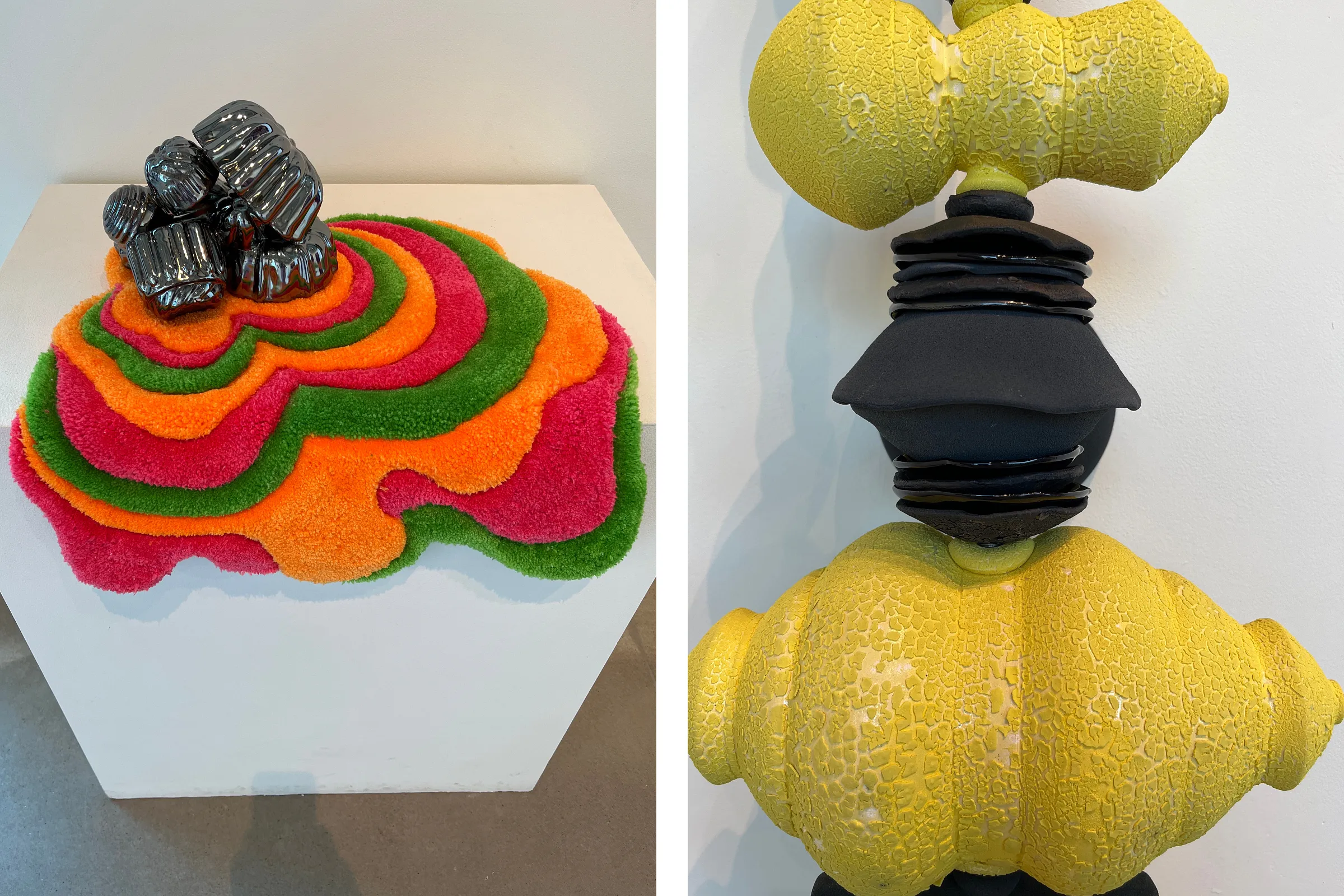
I can’t quite explain how The State of Craft took me from paper, clay, and thread to questions like: How does the world hold together? How do we hold ourselves together, and hold each other? Suffice it to say that it’s a mark of an excellent show to be able to do it — as well as a testament to the never-known-enough skill and sensitivity of Oklahoma’s fine craft artists.
Next at 108|Contemporary: Cynthia Marcoux, “Beaded Memories,” opening Feb. 2
